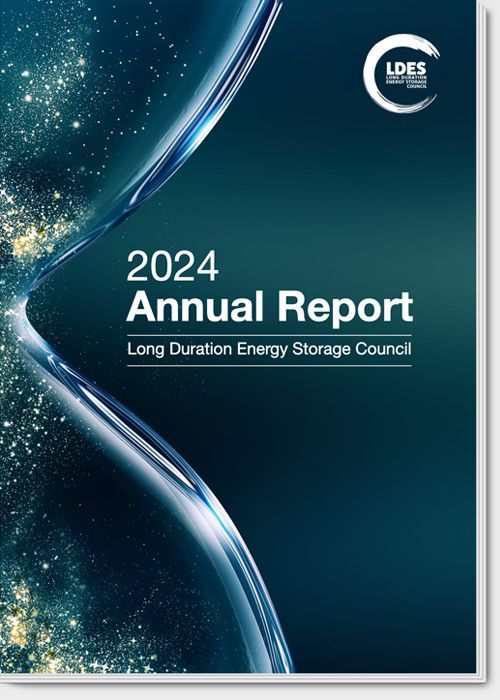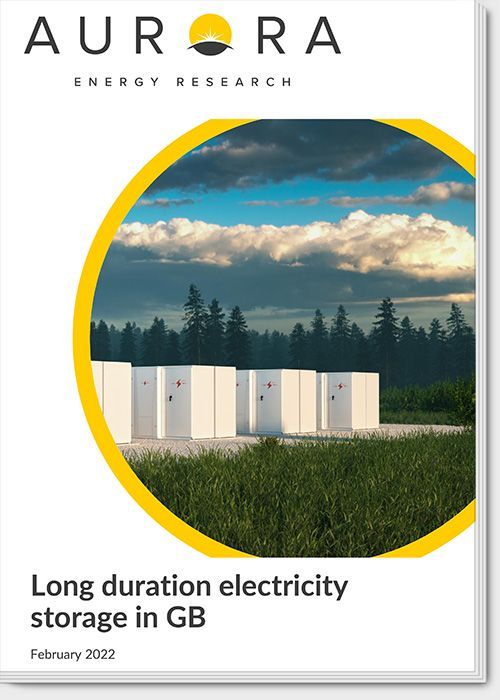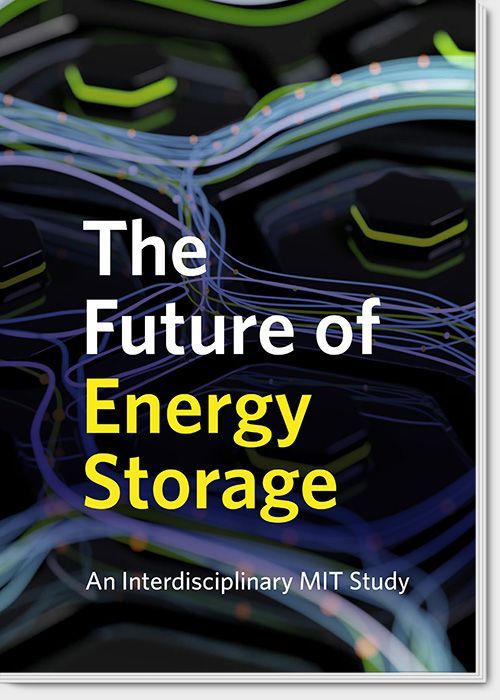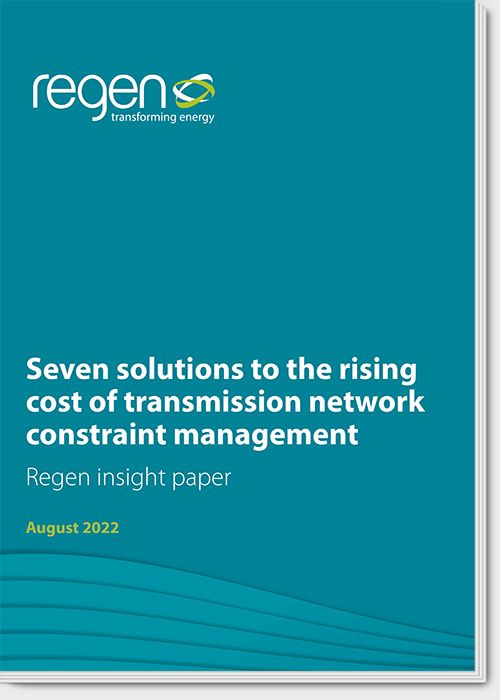INSIGHT
On this page you will find our FAQ and links to relevant Industry Reports below. If you have any questions please send your enquiry from the contact page.
RheEnergise FAQ
- SYSTEM ADVANTAGES: What are the advantages of using this High-Density Hydro system?
-
The principal advantages are:
• Build it where you need it. HD Hydro® can be installed on hills 2.5x lower than a project using water and still achieve the same power – allowing access to many more sites closer to user demand.
• Ability to develop, construct and scale rapidly: Our demonstration project received planning consent in under 6 months!
• Compared to conventional pumped hydro (which can take > decade to permit) Our systems are smaller (10MW -100MW); fully contained in a sealed system and avoid social and environmental issues associated with conventional pumped hydro. This leads to fast permitting, construction and easier landscaping, translating to similar timeframes to distributed renewables like wind and solar projects.
• Best economics for market need: HD Hydro fundamentally works well at the 10MW - 100MW scale, and 8+ hours “long duration”, maintaining the best-in-class economics of conventional pumped hydro, with minimal degradation over a system lifetime in excess of 50 years. In contrast, chemical batteries are increasingly uneconomic at these scales. A significant portion (up to 70%) of the LDES market will be at medium duration storage (4-16hrs) to enable transition to 100% renewable grids.
• Local: HD Hydro is a local solution. At least 65% of the total project CAPEX is spent locally on labour, consultancy and construction companies.
• Low risk novel technology: building on over a century of established industrial experience, capacity and supply chain knowledge of traditional PHS with incremental improvements and modifications means minimal risk and rapid progress in technology.
• Modularity: not only does modularity drive cost reduction, it also potentially allows customers to start generating revenue earlier. As soon as phase 1 of a multi-phase project is ready, the project can start operations, generating revenues.
• Reduced water extraction: HD Hydro is closed loop and thanks to the weighting agent, has 2.5x the energy density. As a result, its water extraction footprint is much smaller, it is a one-off event at the beginning of a project, and thus making projects possible in even arid conditions.
• Warm Climate: HD Hydro has no problem with warm temperatures. The fluid performance works well in warm climate and the closed-loop reservoirs minimise evaporation.
• Resilient supply chain: The feedstock mineral is abundantly available globally, and environmentally benign, without dependency on rare earth minerals. - R19 FLUID: Are the raw materials needed to make the High-Density Fluid all commonly and cheaply available? Are they available locally in the UK or do they need importing? Any risks of supply constraints or cost increases?
-
The feedstock mineral for the fluid is abundantly available globally, and in almost every country we have looked including the UK. RheEnergise is developing a supply chain strategy to ensure that there is alternative supply for each key component.
- R19 FLUID: Would the high-density fluid (R19) be safe if it were to leak into the surrounding environment?
-
Our high-density fluid (R19) in non-corrosive, non-reactive. It has been certified by an independent laboratory as non-toxic. Additionally, projects will be designed to minimise probability of leak and be fitted with state-of-the-art detection and containment should a highly unlikely leak occur.
- R19 FLUID: What happens to the fluid at the end of a project life?
-
RheEnergise is excited about the circular economy opportunities for the fluid, and has an active workstream to identify applications, collaborations and value capture at the end of a project life. This work stream is not yet concluded, however potential industrial options include:
• Extend the life of the project via an overhaul
• Re-use the fluid on a new project in the region of the one being retired
• Dense non-reactive minerals are used in various applications e.g:
o Spreading our mineral mix onto farmland as an agricultural product to enrich soil health
o Sound or radiation absorption
o As a weighting agent in construction for other applications e.g. weighing down undersea cables and pipes.
• Use in the paint industry
• We anticipate that there are industrial applications that we have not yet considered.
As a last resort, due to its benign nature it could be cemented in situ at the end of project life. - PROJECT COSTS: How does the Levelised Cost of Storage (LCOS) of HD Hydro compare with other technologies?
-
HD Hydro has the lowest LCOS for storage durations over 4 hours except conventional pumped hydro in open loop applications. The only other technology with similar LCOS for long durations is compressed air (using existing, pre-worked, underground salt caverns) which, like conventional pumped hydro, creates highly specific siting needs.
- PROJECT COSTS: What is the expected revenue stack for the project?
-
As a long duration storage asset, the principal form of revenues will come from energyarbitrage (buy low, sell high), which typically comprises 70% or higher in the revenue stack. This is the volume part of the market with the greatest breadth and depth. Our aim with the system is to provide a solution that can address the widest possible combination of markets, enabling customers to optimise for their market structure. These include opportunities in capacity markets and emerging policy such as the Cap and Floor Scheme in the UK or central procurement of long duration systems in Italy.
- COMMERCIALISATION: How long will it take to get to market? Is the market already satisfied, or will the demand continue to grow to accommodate RheEnergise?
-
The market is enormous: the LDES Council/McKinsey predict a global need of 85-140 TWh of long-duration energy storage, with a market potential of up to 4 trillion USD by 2040. Battery energy storage systems (BESS) have their place in the short-term energy storage market, and their rapid scale-up has demonstrated the benefits storage can bring in balancing renewables. However, BESS are lowest cost only for relatively short-term storage and frequency response services. As renewable penetration of grids increases to >30%, the need for medium duration storage (4-16hrs) becomes more acute, with increased price volatility (due to the intermittency of renewables) providing clear price signals. We have particularly strong market pull from more advanced renewable power grids in Chile, Australia, certain US states and European markets, where medium duration storage technologies, like RheEnergise’s HD Hydro, are profitable today. As the market shifts, longer term storage will be needed too, which batteries will struggle to deliver. Ultimately, we will need a huge amount of storage, and that storage needs to include some short duration (1-3 hours), lots of medium duration (4-16 hours), and some long duration (>16 hours). https://auroraer.com/wp-content/uploads/2022/02/Aurora-Report-Long-Duration-Electricity-Storage-in-GB.pdf
- COMMERCIALISATION: What is your target market and project size?
-
Our aim is to develop a solution that can be placed in many locations and achieve scale faster by deploying many multiples of projects in tandem. We are targeting projects from ~10MW up to ~100MW and 4-16hours of duration. This is not a hard envelope but rather one that we see as the most likely.
We see HD Hydro as a distributed energy store providing flexibility to an increasingly distributed generation system. The vast majority of gas peaking plant projects (currently used to bridge gap between supply and demand) and battery storage projects currently fall within this envelope. - COMMERCIALISATION: Where internationally would you expect to make first steps?
-
Following our 500kW demonstration plant in Devon, UK, we are exploring a 10MW pilot project with developers in UK & Ireland, and North America close to our home markets. As we commercialise, we would like to address clusters of project opportunities in target markets including Chile, Australia, N America and Europe.
- COMMERCIALISATION: Are you ready to supply and install?
-
We are actively working with strategic development partners on project feasibility (land, grid and planning) for a wave of projects with the potential to construct from late 2026.
- COMMERCIALISATION: Is RheEnergise seeking partners for commercial projects?
-
Yes! We are looking to partner with developers, financers, OEMs and EPCs to deliver High-Density Hydro projects. We are currently building out our commercial pipeline for projects to be commissioned in 2027 and onwards.
- TARGET MARKET: Who are your target customers?
-
(1) Energy Developers: Our customers are companies who develop energy projects in general. We would expect those customers to have a strong view on how they want to operate the plant to earn the best revenues for that specific location. We would expect that there would be multiple facilities spread across the grid, providing support (or value) where it is most needed.
high
(2) Commercial and Industrial customers who are aiming to decarbonise their operations, and have suitable elevation drops (150-250m) on their site e.g. quarries, mining operations etc
(3) Specific high energy use cases, with strong pressure to be zero-carbon such as datacentres. - TARGET MARKET: What is your development strategy?
-
There are 3 types of installations which we anticipate will make up the majority of sites:
• Connected directly to the grid to provide ancillary services and energy trading.
• Co-located with renewable energy systems, providing arbitrage services (increasing the value of the energy sold). This could be on the same grid connection or even on the same radial feeder.
• To develop behind the meter projects at large industrial energy user sites, co-located with renewables to provide genuine 24/7 clean power eg. 10 to 100MW, 8-16hr system, co-located with wind and solar to provide 24/7 clean power to a mine site (or desalination). This could be on or off grid. - TESTING: What sort of testing have you done?
-
Our High-Density Hydro solution is a closed loop system and therefore both highly predictable and manageable. It means that we can be incredibly accurate with our O&M costs/provisions and warranties. We will be able to predict, potentially within days, when something needs to be replaced or serviced. Our R&D facility in Montreal includes a pressurised test loop, which imitates real-world conditions and allows our engineers to test and iterate component parts such as the HD turbine. Pumped-hydro equipment suppliers use an analogous setup to test equipment before issue.
Our 500kW demonstration project will effectively become our live testing lab, allowing us to transfer our knowledge and measurements in the lab to a much greater scale. In time, our test results will be third party validated.
We have performed independent lab testing of our fluid composition, with results used in planning consent applications, with the UK’s Environment Agency having no concerns. - TESTING: What is the effect of abrasion from the HD fluid on the turbines, valves, pumps, and other key parts of equipment?
-
The mineral in our fluid is chosen in part for its softness (2.5-3.5 Mohs), reducing the detrimental effects of abrasion. The turbine has been optimised to operate with our HD fluid; it is a modified Francis turbine, which is the turbine of choice for conventional pumped hydro. Francis turbines can tolerate the presence of harder minerals such as quartz (high quartz content is a seasonal occurrence in regular pumped storage systems). Such minerals will not enter our closed-loop system, which will have a highly predictable wear pattern and corresponding O&M regime. Due to the predictability, in time we anticipate a lower operational and maintenance cost compared to hydropower subjected to seasonal abrasion.
- TESTING: How can you be sure that some machine components are not unacceptably worn after 6 months continuous operation with R-19?
-
We will have tested all of the materials we plan to use in an abrasion test rig. The abrasion test rig is to confirm the theoretical work to date and will inform exact specification of materials. If the specification of any material has not previously been tested, we can put that through the test rig too. It means that we will have very predictable knowledge of wear rates and in turn maintenance or replacement intervals. It also means we could choose to design for 5-, 10- or 20-year replacements (different, but predictable, levels of capital or operational costs). The component designs will include our own specifications of materials - one area where we will be closely monitoring specification, application and quality is the surfaces that may wear.
- TESTING: What is the fluid and is it stable?
-
It is formed of a solid (finely ground mineral) suspended in water with small amount of additives. It is non-reactive, non-corrosive and environmentally benign
Physical and formulation chemistry gives fluid a non-Newtonian shear profile, where it has stability when stationary, and then thins to become low viscosity when operational. The viscosity approaches that of water.
The HD Fluid is non-corrosive, and the system does not need exotic material selection to cope with the HD Fluid. Thermal and electrical conductivity is effectively that of water. Special consideration needs to be given in designing the system (e.g. hydraulic design) and details (e.g. valve design) with some notable differences when compared to conventional pumped hydro storage with water. - TESTING: What about the increase of fluid viscosity?
-
The HD fluid is non-reactive, non-corrosive and environmentally benign. It has been co-optimised for viscosity, stability and density to ensure performance in the system, and the optimal balance between low degradation, long system lifetime and high round-trip efficiency. Physical and formulation chemistry gives the fluid a non-Newtonian shear profile, where it has stability when stationary, and then thins to become low viscosity when operational.
Our HD fluid has a low viscosity (approaching that of water) when operational therefore minimal friction affecting the efficiency of the system. - ROUND TRIP EFFICIENCIES: What is the Round Trip Efficiency? How much electricity is required to pump up? How much energy is generated in descent through the turbines?
-
Modelling shows that a Round Trip Efficiency (RTE) of 80% is achievable with a High-Density Hydro system. HD Hydro has fundamentally the same overall architecture as traditional pumped hydro (PHS), and uses the same types of turbo-machinery, valves etc modified for our HD Fluid.
In traditional PHS systems, RTE’s of between 75% and 83% are achieved, when predominantly operated at full load. This range is mainly caused by age of the systems, where older systems, built 30, 40 or even 60 years ago have lower RTE’s than more modern installations. The most modern are achieving >80% RTE.
RheEnergise is confident that because we are fundamentally the same as traditional PHS, we can also achieve 80% RTE.
We would expect various losses in the system:
Electrical losses: these will be identical for any mechanical systems that use drives, motors and generators to convert mechanical power to electrical power. These systems are highly efficient with losses of ~4%
Mechanical losses in the pipes (penstocks): typically projects are designed with a target ‘head loss’ of ~3%
Turbine and pump losses: one would anticipate ~5% losses.
These losses combined provide a RTE of >80%, RheEnergise uses 80% for its calculations. - ROUND TRIP EFFICIENCIES: To what extent does the concept depend on being able to pump the fluid back uphill using cheap electricity, and what happens if the daily price variations start to reduce due to demand from other energy storage technologies?
-
Trends in the market suggest the opposite, that price volatility (the spread between low and high prices) is increasing as the deployment rate of storage capacity trails that of renewables. As the energy crisis of 2022/23 has subsided, average prices have reduced but volatility has stayed high.. As renewables reach critical thresholds within markets, volatility increases sharply due to renewables becoming the marginal unit of generation which sets the price – as demonstrated by the sharp increase in negative electricity prices in Europe over the past years. Renewable energy developers are seeking to prevent declines in revenues by including energy storage, so that the owner of the project can shift energy output across time to meet higher prices. Energy markets are complex, and comprise various ancillary services as well as wholesale revenues. There is deep market need for energy storage before volatility in wholesale electricity prices decline.
- LOCATION: How suitable would your technology be for urban sites, towns built on or set amongst hills, or with man-made hills such as former slag heaps?
-
Power infrastructure is often quite close to the bottom of hills at the edge of towns. We think true urban sites are possible but are also probably rare. We think edge of urban are more likely. There are a fair few towns and cities that are surrounded by hills. Man-made hills are a distinct possibility as are man-made holes like quarries.
- LOCATION: What are the siting considerations?
-
• The most economic sites require an elevation (or ‘head’) ranging from 150m to 300m.
• Gradient of at least 10%, ideally steeper.
• At least 1 hectare available space at the top and bottom (ideally flat) for storage tanks.
• Good road access
• Brownfield sites are preferable, as they are quicker to secure planning consents and therefore develop. - LOCATION: What does an ideal site look like?
-
An ideal site has a hill with 150-300m of elevation and flat areas at the top and bottom to site the storage tanks and a gradient of >10%. Ideally, there would be good road access, local grid infrastructure, the project site would be situated nearby local energy demand and the landowner engaged with the project. Co-location with wind or solar or a large industrial energy user is very attractive.
- ENVIRONMENTAL IMPACT: What environmental impact assessments will you undertake?
-
We would anticipate that the environmental impact assessments, for any specific site, will be those that are required by the local authority. It would certainly include an assessment of any wildlife you could affect, how the project protects that wildlife and how wildlife could be improved over the term of the project.
- COMPETITORS: What risk is there from competition?
-
It is really any solution that provides flexibility to the grid or a generation asset. There is some overlap in competition with both batteries and with PHS but probably not that much. Developers increasingly recognise that for more than ~6 hours of storage, batteries are not the solution for both capital cost and operational cost reasons. PHS is only likely to be developed where there are good sites, and a government backed contract (or revenues) to proceed. The prevailing form of flexibility for durations above 1-2 hours today is gas OCGTs or CCGTs. High Density Hydro’s costs are already competitive with gas.
The advantage is expected to grow as increasing low electricity price periods imply low-cost charging for energy storage, but lower utilisation and therefore higher costs for gas.
The scale of the opportunity for energy storage is so vast that we all need to work together in solving the climate and energy crises.
LDES Council
A path towards full grid decarbonization with 24/7 clean Power Purchase Agreements
May 2022
UK
RheEnergise Limited
Collective Auction Rooms
Room 302
5-7 Buck Street
London
NW1 8NJ
Canada
4800 Saint Ambroise Street
Unit 115 Montreal
Quebec
H4C 3N8
RheEnergise Limited | Company number 11927250
Registered office:
Collective Auction Rooms, 5-7 Buck Street, London, United Kingdom, NW1 8NJ














